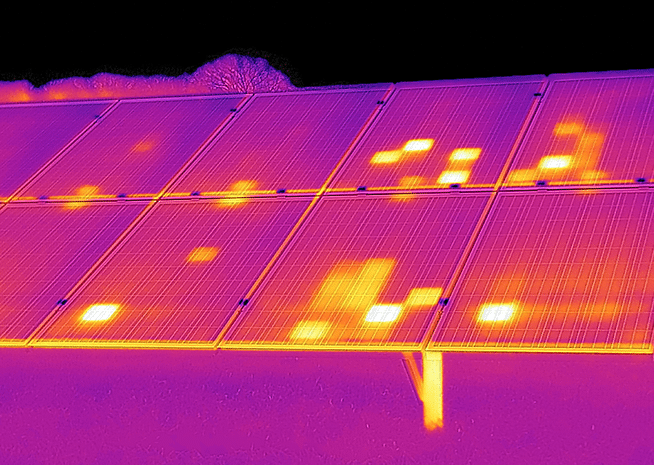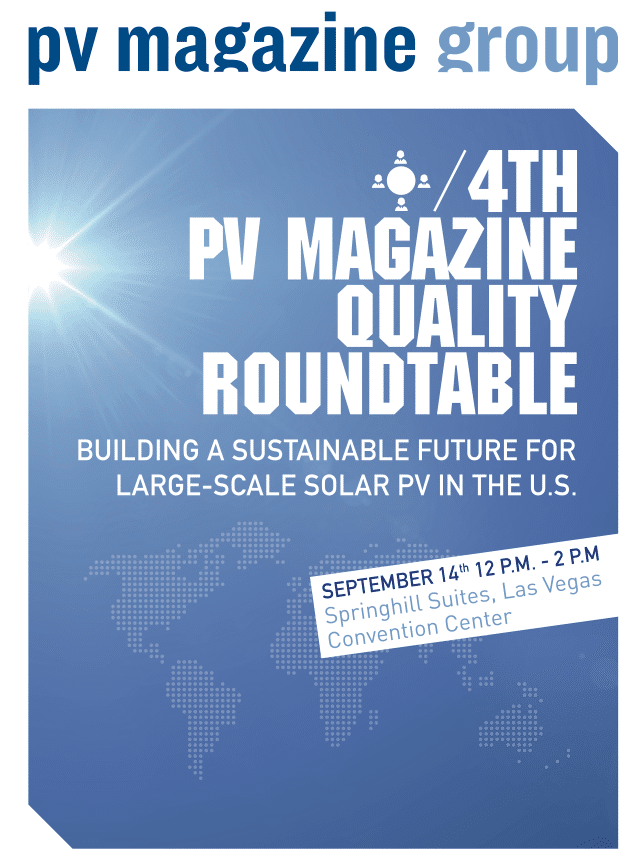“We provide non-cancellable third party warranties, so that when module manufacturers are not responsive or don’t pay, then we do,” says Mike McMullen, the co-founder of PowerGuard Specialty Insurance Services, of San Francisco. “The majority of non-recourse finance banks require it, and they tend to be smartest guys on the block,” he says.
Buyer beware. “We’ve seen hundreds of solar companies become insolvent, so the real liability risk is on the customer,” says McMullen. The underwriter is privately owned by investors including the Carlyle Group. “Warranties are only as good as the balance sheet that backs them up,” he notes. “We are not risk takers, but we are underwriters on behalf of a select group of insurance companies, to their specifications,” he says.
Interested in discussing the question raised?
Come to our roundtable at SPI in Las Vegas, 12 p.m. to 2 p.m. on September 14.
-> More information
If you have examples of poor quality modules or installations and interesting discussion points – pv magazine would be interested in your story and will treat all submissions with the utmost confidentiality.
-> More information
To register for free, email us at:
-> roundtable@pv-magazine.com
Quality control is one key to successful underwriting. “We use outside resources — like TUV and Clean Energy Associates — to inspect manufacturer plants at least yearly, and we monitor the reports closely. We are also a repository of claims; while a claim usually claims go to the manufacturer, it may also come to us,” says McMullen.
The PowerGuard database is by far the largest in the world for solar modules, McMullen suggests. “We just surpassed the 100 million modules mark for modules registered by serial number in our database,” he says. “Unlike many manufacturers we can see on our website where shipments of modules are delivered,” he says.
-> “Poor quality planning: Shifting the blame, passing the buck”
-> “Melting backsheets, broken cells, and hotspots”
-> “Burnt out, incompatible connectors”
Further Roundtable material:
-> Interview with George Touloupas, Director of Technology and Quality at CEA
“Minor differences in yield percentage make the difference between good and bad investment”
“The solar module manufacturers collect customer service reports on a monthly basis, and we download all the data streams, which come in scrambled from various manufactures in their certain ways,” McMullen explains. “We adjust and manipulate the data then put it into a homogenous data base,” he says. “This enables us to upload selected data to an insurance company on a monthly basis. The data is a gold mine,” he reckons.
The cost of module warranties is a matter of “fractions of a cent per module for the manufacturer,” McMullen notes. “Each warranty deal is done on a custom basis. Some manufacturers will do $200 million in sales while others will do $3 billion in sales,” he explains. So even if a warranty set aside of five percent is standard in the solar industry, the total amount in such a fund broadly varies by total revenue. “None of this moves the cost needle for a customer,” he points out. For developers seeking blanket coverage for a project that may include modules from a variety of manufacturers, a warranty can be secured for “pennies per watt,” he calculates.
“Module failures have been increasing. Some of the giant factories that were making modules for $8 a Watt when they were built are now forced to sell their products for 55 cents a Watt and that encourages manufacturers to cut costs and corners,” McMullen warns.
Please share your thoughts with pv magazine at roundtable@pv-magazine.com
Building a Sustainable Future for Large-Scale Solar PV in the U.S.
- 12 p.m. to 2 p.m. on September 14, 2016 during SPI in Las Vegas
- Springhill Suites at Las Vegas Convention Center
- Register at no cost at: roundtable( at )pv-magazine.com
- Target audience: Asset managers, EPCs, operations & maintenance suppliers (O&M), system designers and independent engineers, financial institutions, insurance companies, investors, system owners (utilities, gencos, IPPs, as well as C & I system owners), certification and testing bodies, research institutes and universities, industry associations, government entities, codes & standards and regulatory agencies.
- MCs: pv magazine
- More information
| Initiative sponsor partner: | Gold sponsor: | Gold sponsor: |
 |  | |
| Supported by: | Supported by: | |
 |
This content is protected by copyright and may not be reused. If you want to cooperate with us and would like to reuse some of our content, please contact: editors@pv-magazine.com.










By submitting this form you agree to pv magazine using your data for the purposes of publishing your comment.
Your personal data will only be disclosed or otherwise transmitted to third parties for the purposes of spam filtering or if this is necessary for technical maintenance of the website. Any other transfer to third parties will not take place unless this is justified on the basis of applicable data protection regulations or if pv magazine is legally obliged to do so.
You may revoke this consent at any time with effect for the future, in which case your personal data will be deleted immediately. Otherwise, your data will be deleted if pv magazine has processed your request or the purpose of data storage is fulfilled.
Further information on data privacy can be found in our Data Protection Policy.